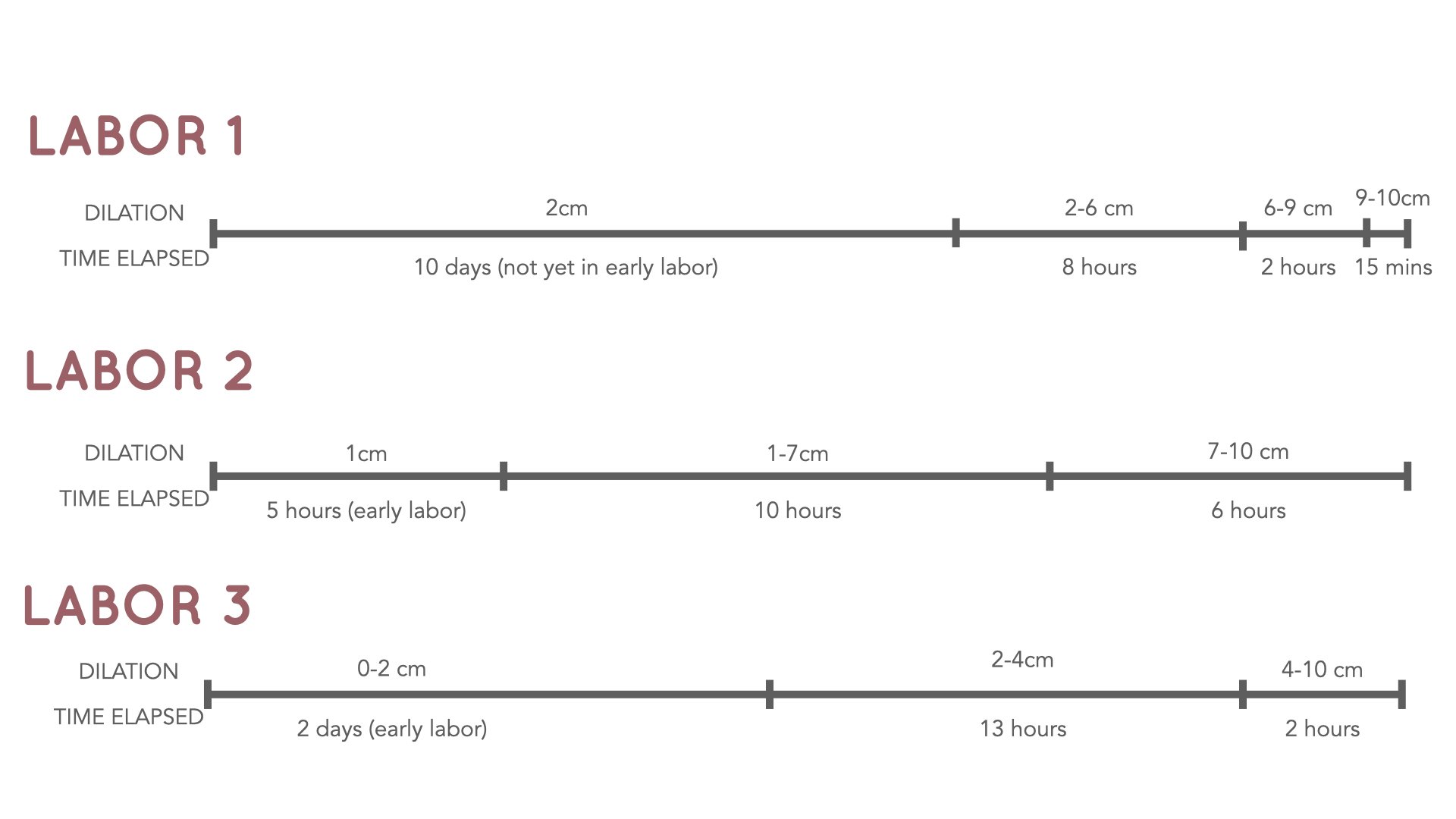Dilation, and why it actually means very little
As you head towards your due date and into labor, there’s a word that will start buzzing around you.
Dilation.
Are you dilated yet? - I’m already 2cm dilated and I’m only 36 weeks. - Let’s check to see how dilated you are. - You’re not dilated, so you’ve still got a way to go. - I was too slow to dilate, so I had a c-section. -
And you know what? They all mean nothing about how your labor will progress. In fact, your state of dilation has absolutely nothing to do with how your labor will go!
Why is that?
Because labor progress is not measured by dilation alone. Dilation is one of many indicators that things are happening, and yes, it is one of 6 things that need to happen for your baby to be born vaginally. But dilation doesn’t tell us anything about how far along you are, how much time is left, how soon you will go into labor or how much hard work you still have to do. Because dilation is not linear. It behaves in an unpredictable way.
Here’s a little diagram to show 3 different labor progressions:
The thing about these 3 labors? They are all completely normal. Nothing unusual about any of them. And this is just 3 ways your labor could go - every single birth is different, and everyone’s body does its own individual thing to birth a baby.
But I did mention 6 things that need to happen for your labor to progress. If you like, you can use these processes to form a bigger picture, and then when you are looking at where you are in labor, you can see that it is a delicate balance of many factors, not just one thing.
THE 6 PROCESSES OF LABOR PROGRESS
◇ Cervical ripeness, also called “softening” - the cervix changes texture in order to open.
◇ Effacement - the cervix starts off thick and needs to thin out - efface - as well as soften and dilate. This is measured in percentages (eg 70% effaced).
◇ Dilation - the cervix opens from 1-10cm. This usually only happens once soft. For first-timers, usually effacement happens prior to dilation. For 2nd, 3rd, etc babies, effacement and dilation can happen simultaneously.
◇ Station - this measures the descent of the baby. It is measured from -3 to +3, with each number telling us where the baby’s head is in relation to the pelvis. 0 has the baby’s head in line with the ischial spines.
◇ Cervical position - the cervix moves from back to front - from posterior to anterior - during labor.
◇ Rotation of the baby - as the baby comes through the pelvis, they must do a kind of corkscrew maneuver to turn themselves and fit through the pelvic inlet and outlet.
It can be helpful to know about all these processes so that you can see that a simple “only 3cm dilated” comment actually doesn’t mean anything without the context of the other 5 things. If you are soft, fully effaced, baby is a low station, and your cervix and baby is in a good position, then your dilation is literally the last thing to happen before you are ready to push, and therefore you’re in a great place!
SO SHOULD I FIND OUT HOW DILATED I AM OR NOT?
This is up to you. It is your choice to have a cervical exam or not - please know that you can decline any vaginal exam, and your doctor or midwife needs your consent before performing one. Some people like knowing. For some it is an encouragement, gives motivation to keep going, or helps them decide whether or not to make alternative decisions, such as getting an epidural or starting an induction. For others, they prefer not to know, and not to be checked, so that they don’t get discouraged or simply because they just want to trust their body to do its thing.
BUT - THE MOST IMPORTANT THING!
I don’t write about all these processes so that you get overwhelmed with keeping track of it all and feel that you need to know where you stand at each minute of labor. Quite the opposite. The point I am trying to make is that your body performs a delicate and beautiful ballet to soften, open and release your baby - it is not just a matter of dilation, and no-one can tell you how you are progressing from that information alone. It is best to trust the process, let your body do its work, and assist progress by being soft, relaxed, and fluid. Listen to your instincts for positioning and movement. Use any means necessary to keep the oxytocin flowing and your body will know what to do.
Artwork by StudioLiscious on Etsy.


